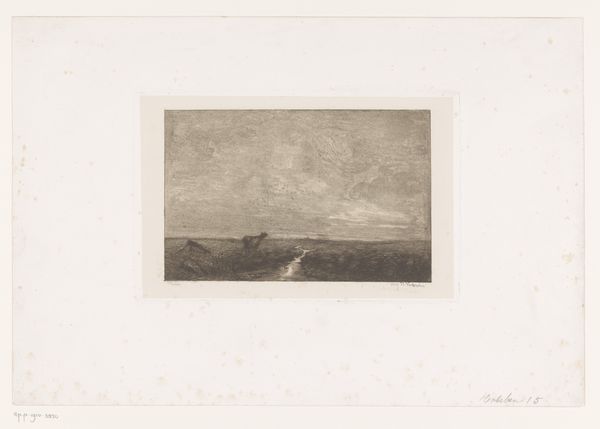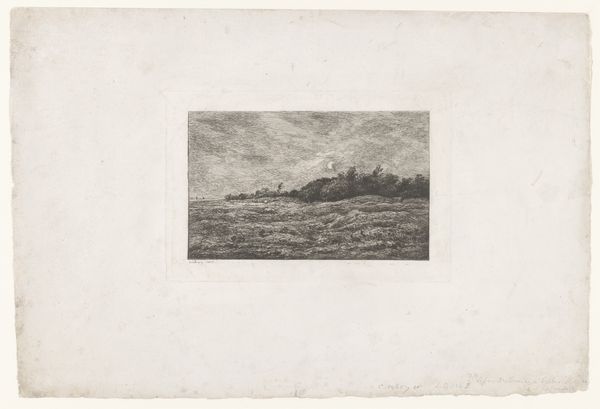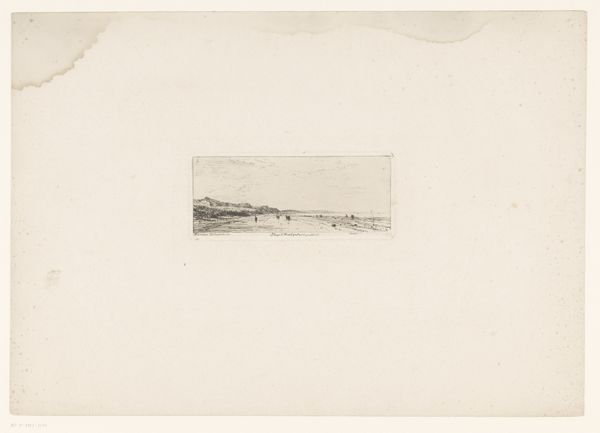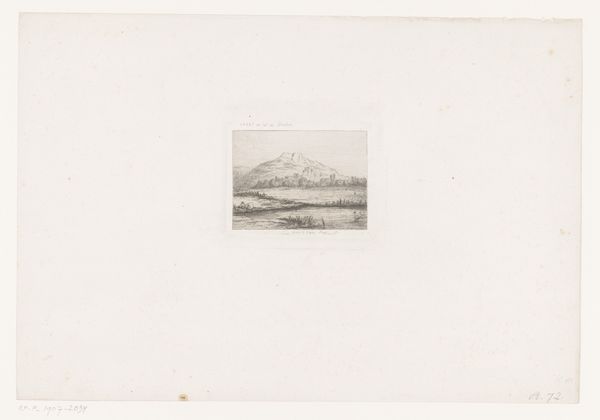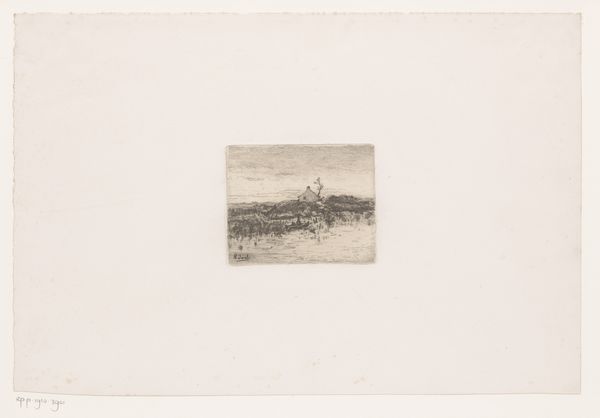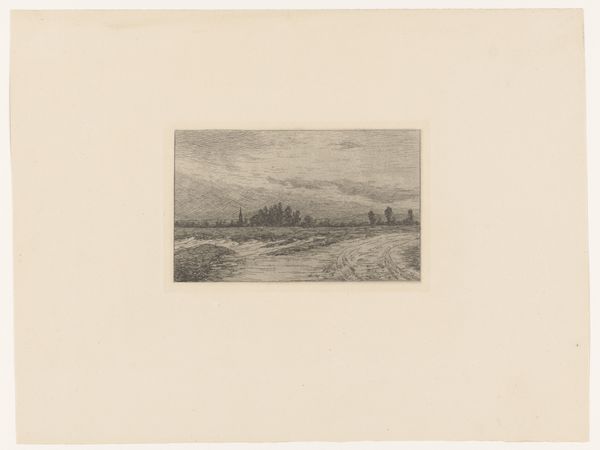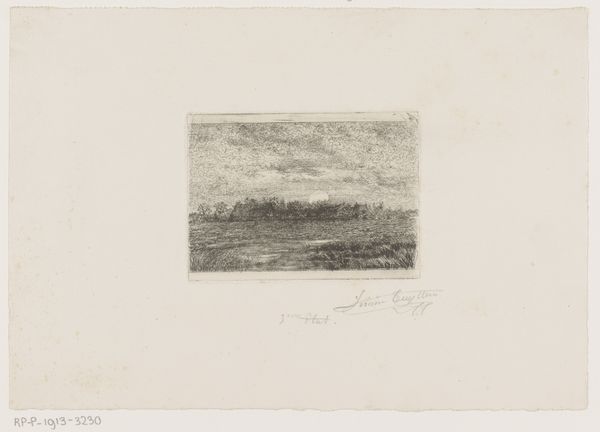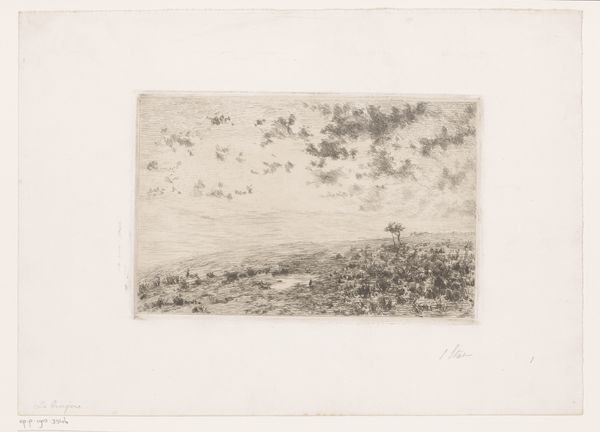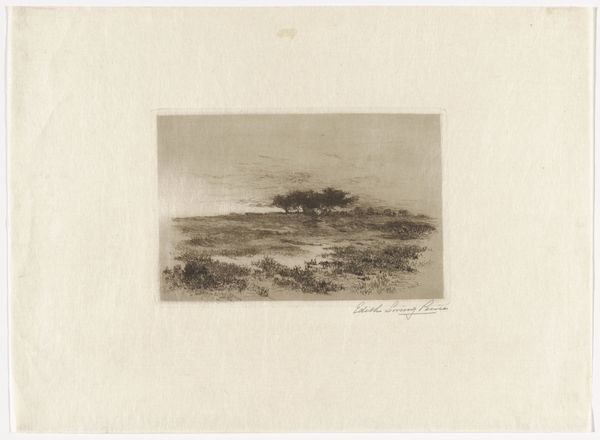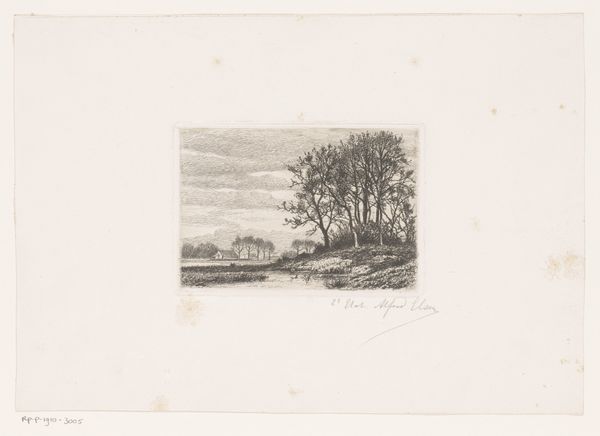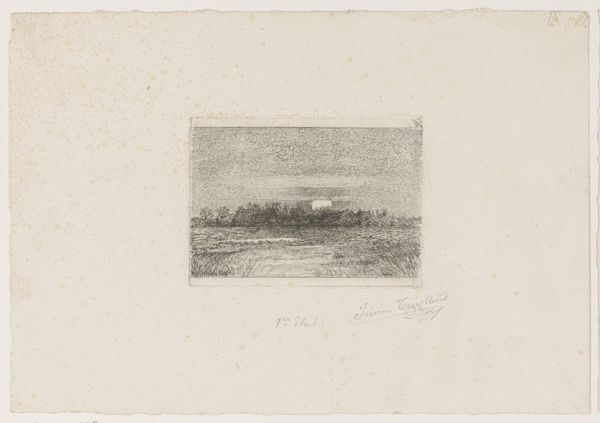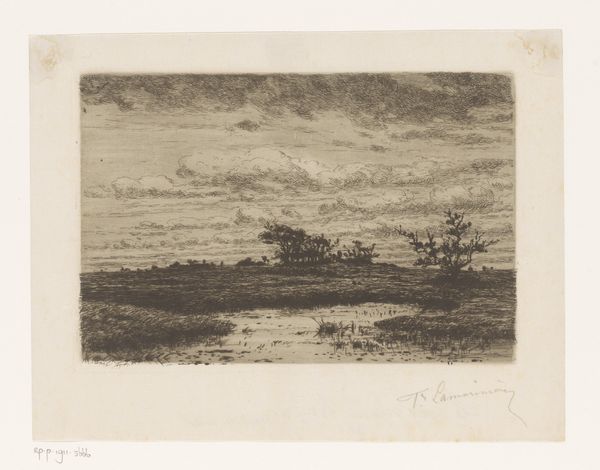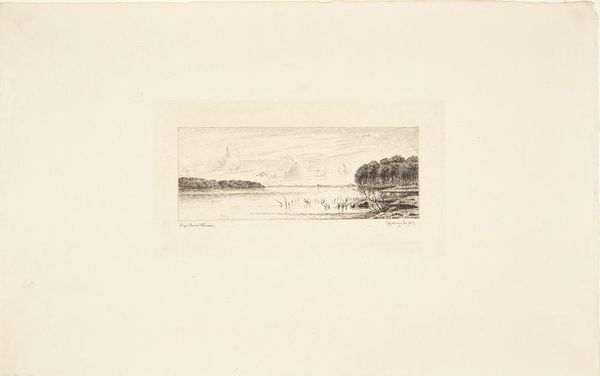
Dimensions: height 100 mm, width 166 mm
Copyright: Rijks Museum: Open Domain
Jerôme Cuyttens made this small landscape etching, showing dunes and a distant town, likely in the Netherlands. Dutch landscape art is interesting because of its relation to a specific time and place. In the 17th century, the Dutch Republic was a new kind of state: a mercantile power, without kings, sustained by global trade. Its art reflected the values of its citizens: hard work, attention to detail, an appreciation for the everyday, and the beauty of the local landscape. We can analyze the ways Cuyttens made use of this tradition. How does the scene fit into the artistic conventions for landscape that had been established hundreds of years before? Where does he innovate, and how does his approach differ? As historians, we can better understand this image by researching the artistic institutions of the Netherlands, the role of art in Dutch society, and the styles and techniques common at the time. The meaning of art is contingent on social context.
Comments
No comments
Be the first to comment and join the conversation on the ultimate creative platform.
